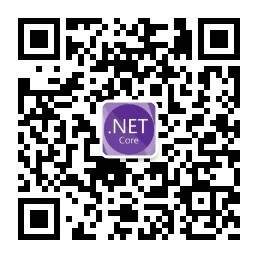一、前言
上面分享了IdentityServer4 两篇系列文章,核心主题主要是密码授权模式及自定义授权模式,但是仅仅是分享了这两种模式的使用,这篇文章进一步来分享IdentityServer4的授权流程及refreshtoken。
系列文章目录(没看过的先看这几篇文章再来阅读本文章):
- Asp.Net Core IdentityServer4 中的基本概念
- Asp.Net Core 中IdentityServer4 授权中心之应用实战
- Asp.Net Core 中IdentityServer4 授权中心之自定义授权模式
为了继续保持IdentityServer4 系列博客分享上下文一致,我这里再把上回授权中心拆分后的图贴出来,如图:
图中的授权中心就是通过IdentityServer4实现的授权服务中心,我下面就直接用授权中心代替IdentityServer4的授权服务来继续述说,也感谢大家对我的支持,一直阅读我的文章。
二、授权流程
2.1 客户端验证流程图

流程图中,客户端仅仅会到授权中心 请求一次,并拿到验证公钥返回给Api资源拥有端,后面客户端再次尝试请求Api资源时候就不会再到授权中心去获取验证公钥,会直接用之前获取到的公钥进行验证,验证通过则授权通过。
2.2 授权及刷新refresh_token 流程图
然而通过授权中心 获取到的access_token 是有有效时间的,如果失效则需要通过refresh_token 重新到授权中心去刷新获取最新的access_token,整体的流程图如下:
客户端携带上一次获取到的access_token 请求受保护的Api资源时,通过公钥进行验证时发现access_token已经过期,则客户端再携带refresh_token 向授权中心再次发起请求,刷新access_token以获得最新的access_token和refresh_token,用最新的access_token 去获取受保护的Api资源,这样可以减少客户端多次跳转登录授权页面,提高用户体验。
三、应用实战
说到例子,我这里不从零开始撸代码, 还是在之前的代码基础上继续改造代码,在原有的定义客户端的代码中新增刷新access_token的相关配置,代码如下:
public static IEnumerable<Client> GetClients()
{
return new List<Client>
{
new Client()
{
ClientId =OAuthConfig.UserApi.ClientId,
AllowedGrantTypes = new List<string>()
{
GrantTypes.ResourceOwnerPassword.FirstOrDefault(),//Resource Owner Password模式
GrantTypeConstants.ResourceWeixinOpen,
},
ClientSecrets = {new Secret(OAuthConfig.UserApi.Secret.Sha256()) },
AllowOfflineAccess = true,//如果要获取refresh_tokens ,必须把AllowOfflineAccess设置为true
AllowedScopes= {
OAuthConfig.UserApi.ApiName,
StandardScopes.OfflineAccess,
},
AccessTokenLifetime = OAuthConfig.ExpireIn,
},
};
}
如果你需要刷新access_token,则需要把AllowOfflineAccess设置true,同时添加StandardScopes.OfflineAccess 这个Scopes,主要代码如下:
AllowOfflineAccess = true,//如果要获取refresh_tokens ,必须把AllowOfflineAccess设置为true
AllowedScopes= {
OAuthConfig.UserApi.ApiName,
StandardScopes.OfflineAccess,//如果要获取refresh_tokens ,必须在scopes中加上OfflineAccess
},
授权中心,完整代码如下:
OAuthMemoryData 代码如下:
/// <summary>
///
/// </summary>
public class OAuthMemoryData
{
/// <summary>
/// 资源
/// </summary>
/// <returns></returns>
public static IEnumerable<ApiResource> GetApiResources()
{
return new List<ApiResource>
{
new ApiResource(OAuthConfig.UserApi.ApiName,OAuthConfig.UserApi.ApiName),
};
}
public static IEnumerable<Client> GetClients()
{
return new List<Client>
{
new Client()
{
ClientId =OAuthConfig.UserApi.ClientId,
AllowedGrantTypes = new List<string>()
{
GrantTypes.ResourceOwnerPassword.FirstOrDefault(),//Resource Owner Password模式
GrantTypeConstants.ResourceWeixinOpen,
},
ClientSecrets = {new Secret(OAuthConfig.UserApi.Secret.Sha256()) },
AllowOfflineAccess = true,//如果要获取refresh_tokens ,必须把AllowOfflineAccess设置为true
AllowedScopes= {
OAuthConfig.UserApi.ApiName,
StandardScopes.OfflineAccess,
},
AccessTokenLifetime = OAuthConfig.ExpireIn,
},
};
}
/// <summary>
/// 测试的账号和密码
/// </summary>
/// <returns></returns>
public static List<TestUser> GetTestUsers()
{
return new List<TestUser>
{
new TestUser()
{
SubjectId = "1",
Username = "test",
Password = "123456"
},
};
}
/// <summary>
/// 微信openId 的测试用户
/// </summary>
/// <returns></returns>
public static List<TestUser> GetWeiXinOpenIdTestUsers()
{
return new List<TestUser>
{
new TestUser(){
SubjectId="owerhwroogs3902openId",
}
};
}
}
Startup 完整代码如下:
public class Startup
{
public Startup(IConfiguration configuration)
{
Configuration = configuration;
}
public IConfiguration Configuration { get; }
// This method gets called by the runtime. Use this method to add services to the container.
public void ConfigureServices(IServiceCollection services)
{
services.AddControllers();
services.Configure<CookiePolicyOptions>(options =>
{
// This lambda determines whether user consent for non-essential cookies is needed for a given request.
options.CheckConsentNeeded = context => true;
options.MinimumSameSitePolicy = SameSiteMode.None;
});
#region 内存方式
//services.AddIdentityServer()
// .AddDeveloperSigningCredential()
// .AddInMemoryApiResources(OAuthMemoryData.GetApiResources())
// .AddInMemoryClients(OAuthMemoryData.GetClients())
// .AddTestUsers(OAuthMemoryData.GetTestUsers());
#endregion
#region 数据库存储方式
services.AddIdentityServer()
.AddDeveloperSigningCredential()
.AddInMemoryApiResources(OAuthMemoryData.GetApiResources())
//.AddInMemoryClients(OAuthMemoryData.GetClients())
.AddClientStore<ClientStore>()
.AddResourceOwnerValidator<ResourceOwnerPasswordValidator>()
.AddExtensionGrantValidator<WeiXinOpenGrantValidator>();//添加微信端自定义方式的验证
#endregion
}
// This method gets called by the runtime. Use this method to configure the HTTP request pipeline.
public void Configure(IApplicationBuilder app, IWebHostEnvironment env)
{
if (env.IsDevelopment())
{
app.UseDeveloperExceptionPage();
}
app.UseIdentityServer();
app.UseRouting();
app.UseAuthorization();
app.UseEndpoints(endpoints =>
{
endpoints.MapControllers();
});
}
}
授权中心代码基本上已经改造完成,我们用postman 访问授权中心 试一试,如下图:
访问结果中已经包含了refresh_token和access_token等相关信息。
我们再来通过access_token 访问Api资源(上两篇有相关代码,未阅读上两篇先去查阅)这里我就直接携带access_token去访问,如图:
访问成功!!
我们再来刷新下refresh_token ,访问如图:
刷新refresh_token成功。
我们到这里再来做一个小小的测试,测试上面的授权流程中的,第4,5 步,上面说到第4步主要是客户端第一次请求Api资源时会向ids4服务网关去请求获取验证公钥,
获取成功返回给Api资源并存储在内存中,后续不再会到ids4服务去获取验证公钥
我们把上面的授权中心 (ids4服务网关)停止运行,再来用之前的access_token请求Api资源,如下图:
现在已经确定授权中心(ids4服务网关)确实停止了,不能访问了,那我们再来通过之前未过期的access_token来请求Api资源网关,结果如下图:
完美,请求还是成功,这完全证明:客户端请求Api资源网关(受保护的资源)时,第一次收到请求会到授权中心(ids4服务网关)获取验证公钥,并保持到内存中,后面的请求不会再到授权中心去获得验证公钥,而是Api资源网关(受保护的资源)中直接通过保存下来的验证公钥进行验证,从而通过授权。
如果您认为这篇文章还不错或者有所收获,您可以点击右下角的【推荐】按钮精神支持,因为这种支持是我继续写作,分享的最大动力!
